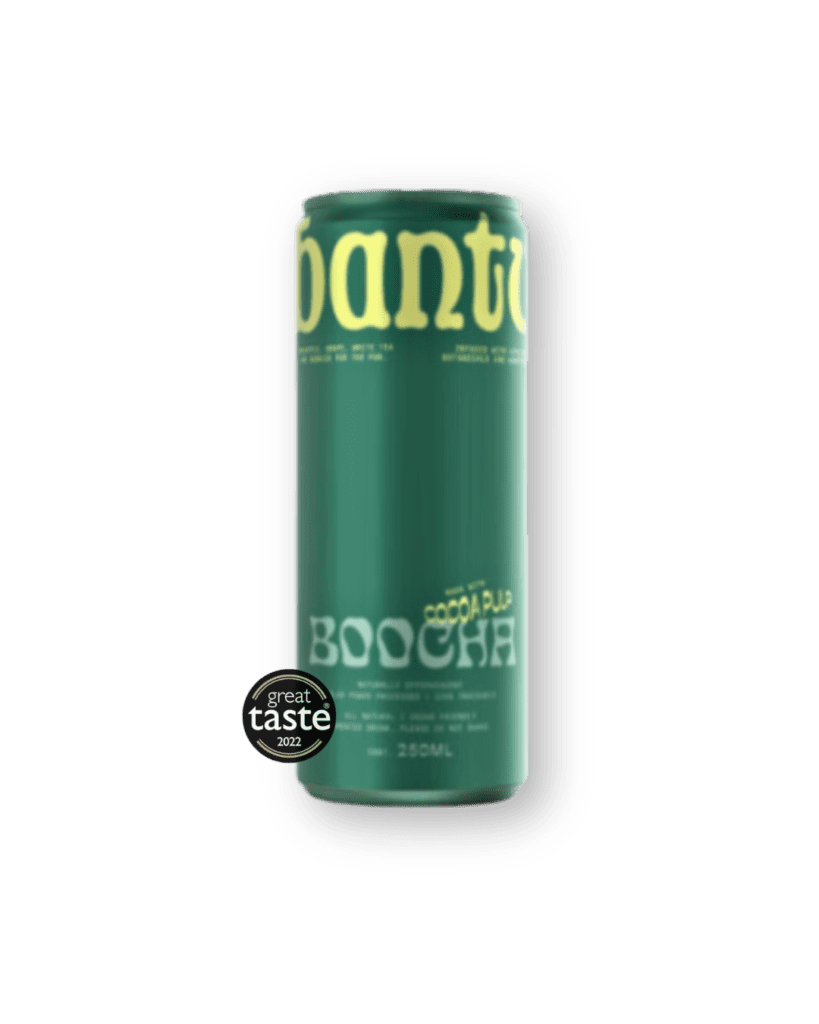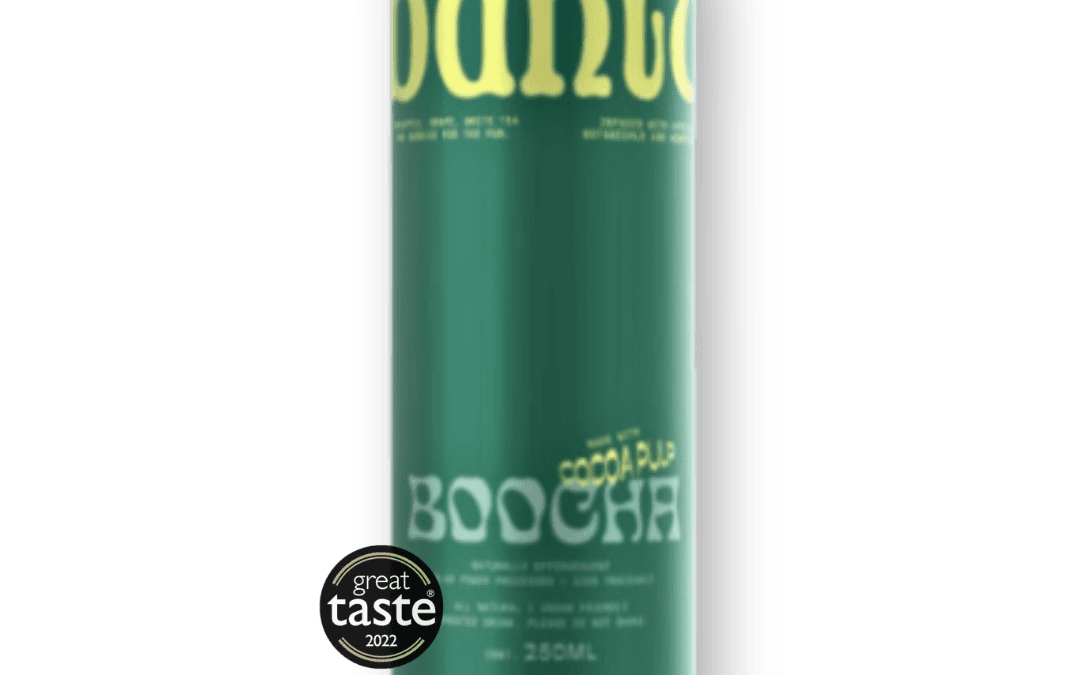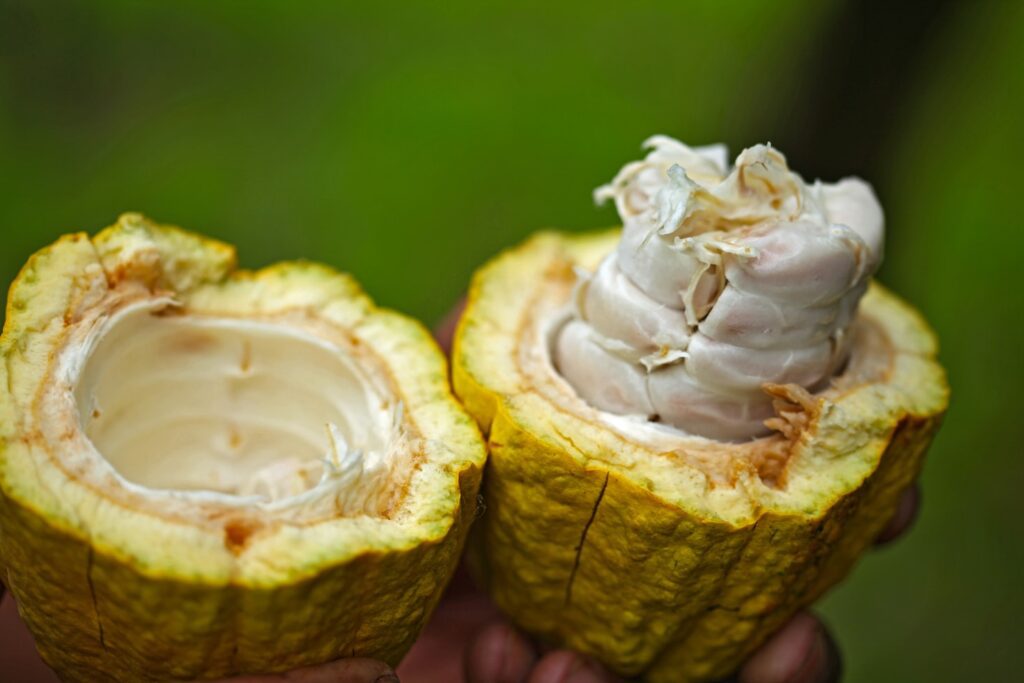
Single Origin Chocolate – 5 Reasons It is Better
January 15, 2023
Boocha, Delicious Cacao Pulp Juice Kombucha
January 16, 2023Cacao Pulp Juice
The Future of Cocoa
Did you know that chocolate, cocoa powder, chocolate liquor, and cocoa butter are not the only products made from the cacao fruit?
That’s right. Aside from the bean, there is a thick white pulp in the cacao pod, which is rich in nutrients and produces a succulent white juice. People in Central America and West Africa have consumed cacao pulp juice for ages. In Cameroon, where our cacao farm is located, local cacao farmers consume the pulp to increase their energy levels.
Cacao pulp juice is predicted to be the next big thing in the healthy beverage industry and signifies innovation in the exploitation of cocoa. Read on to find out why this new beverage is considered the future of cocoa.
What is Cacao Pulp Juice?
Cacao pulp juice is a naturally sweet juice obtained from the thick white pulp that surrounds the fresh bean in the cacao pod. The pulp makes up about 5-7% of the total bean weight.
Unfortunately, for a long time, cacao pulp was discarded as waste during the fermentation of cocoa beans.
Traditionally, when processing cacao beans, the beans are harvested with their pulp and left to ferment naturally. During fermentation, the pulp undergoes hydrolysis, broken down by microorganisms on the cacao bean into a liquid called cacao sweatings. This liquid is usually left to drain out of the beans and thrown away.
During hydrolysis, proteins and carbohydrates are also broken down within the beans. This important step enhances the chocolate flavour later on during the roasting stage.
To speed up fermentation and allow industrial production of cacao beans, microbial enzymes called pectinases are introduced. Pectinases are a group of enzymes naturally present in cocoa beans that play a role in the natural ripening and fermentation of fruits. These enzymes speed up the breakdown of lecithin, a fiber present in the pulp, turning it into cacao sweatings.
Recent studies on the nutritional value of cacao pulp have revealed that this rich part of the cacao pod can serve to make a sweet juice that can be commercialized.
READ: The Untapped Potential of By-products of Cocoa Production.
How to Make Cacao Pulp Juice
To produce cacao juice, the pulp is extracted from the cacao pods and separated from the bean. Then the pulp is treated with pectinases to duplicate the fermentation process that occurs during the processing of cacao beans. This results in a liquid which is then filtered, centrifuged, pasteurized, filtered once more, and bottled for consumption.
What Cocoa Juice Tastes Like
Unlike cacao beans, Cacao juice does not have a chocolate or nutty taste or scent. Instead, it has an exotic flavor that blends notes of sweet and sour with a hint of umami or savouriness.
The sweet notes will remind you of fruits like passion fruit, honey, and pear, while the sour notes ring of lychee, yuzu, and pineapple. The pulp produces a light-yellow drink that looks white like peach juice.

Boocha is a nutrient-rich blend of cacao juice and kombucha tea. Order online.
Health Benefits of Cacao Juice
Here are the several health benefits of drinking cacao juice.
● Increases energy levels
Cacao juice contains a variety of macronutrients and minerals that nourish and revitalize the body. It is rich in protein, carbohydrates, fats, fibers, and sugars (glucose, sucrose, fructose).
It is equally rich in minerals like potassium, magnesium, calcium, sodium, iron, zinc, copper, phosphorus, and manganese. It also contains vitamins C, B3, B5, B6, and biotin.
● Rich in antioxidants
Cacao pulp juice is a good source of antioxidants such as polyphenols, catechins, epicatechin, procyanidin B2, and C1. Antioxidants prevent diseases in the body as they help get rid of free radicals that may harm our cells.
● Strengthens and improves health
Cacao juice contains two main chemical compounds that help improve general wellness and reduce the risk of chronic diseases: polyphenols and theobromine.
Polyphenols are micronutrients found in plants that help strengthen the body and prevent chronic diseases. They have a strong antioxidant effect and help reduce blood pressure, inflammations, and control sugar levels in the body.
Theobromine, on the other hand, is a chemical compound that acts as a stimulant in the body. It helps regulate blood pressure, improves sleep, detoxifies the body, regulates cholesterol levels, increases blood flow in the heart and brain, promotes weight loss, and acts as an anti-inflammatory.
● Hydrates
Cacao pulp contains 80 – 90% of water, meaning the juice can be produced with or without any additional water. For those looking to adopt a more healthy lifestyle, introducing this into your diet will be a great way to keep up the body’s hydration levels.
How to Use Cacao Juice
Cacao juice can be drunk on its own or blended into various drinks and foods to add an exotic taste.
Cacao pulp juice is commonly used in cocktails to add a refreshing touch. It is also used in smoothies and desserts as a substitute for sugar and other sweeteners. Its usage in cooking is still largely untapped, but it presents an avenue for innovation in the food industry.
How to Properly Preserve Cocoa Juice
During production, the pulp is fermented and pasteurized for several hours to ensure it is safe for consumption. This process preserves the juice’s natural flavor and increases its shelf life without the need for preservatives. The juice is packaged in small containers for consumption. Once opened, it can be kept for up to 5 days.
Why I Got into Cacao Juice Production
Growing up in Cameroon, whenever I visited my grandmother, I would tear open cocoa pods from the trees around the house and eat the pulp while my grandmother sipped on some palm wine. I just loved the sweet taste of the pulp around the beans. In my wildest imagination, I never associated the brown bean I threw away after sucking the pulp with chocolate at all.
Eventually, I became curious. I learned more about cocoa farming and how to make some extra income.
However, I wanted to do so using a new approach. I realized that, unlike the bean, the cacao pulp was underutilized and unknown to consumers despite its plethora of nutrients and benefits. Today, cacao pulp juice is a growing niche with huge potential, especially as we are becoming more health-conscious consumers.
My drive for innovation in cacao guided us through the production of our two best-selling cocoa juices, including “Boocha” our cacao pulp juice kombucha.
Our Contribution to the Supply Chain
The cacao juice industry is still a new and growing sector. Getting into cocoa juice production is a great avenue for my team to explore unchartered territory.
Cacao juice production is a sphere where there is still room for innovation and opportunity to generate a lot of income. Not only for us, but it is also a new source of income for farmers who can now also sell cocoa pulp in addition to cocoa beans.
Farmers sometimes incur huge losses because they have little control on the volatile prices of cocoa on the world market. Being able to commercialize cocoa pulp will guarantee more stable revenue for them to sustain their families.
Getting into this industry gives us the opportunity to offer a valuable product that can improve our consumers’ lives with multiple health benefits. Cacao juice production encourages a shift towards a healthy lifestyle and contributes to overall wellness.
Additionally, we are taking part in a world-changing action aimed at rendering cocoa exploitation a more sustainable industry. With over 5 billion tonnes of cocoa produced worldwide, a lot of waste is generated, as only the beans are used to make chocolate and other products, while the nutritious pulp is thrown away.
Getting Our Pulp from Cameroon to the UK
To guarantee the best quality juice, we select the best pods grown on our farm in Cameroon. The best pulps are harvested from three-quarter ripe, greenish-yellow pods. Why three-quarters ripe? Completely ripe pods are dry and have a brownish color that affects the quality of the juice.
After extraction, the pulp goes through sterilization for conditioning and to guarantee hygienic handling appropriate to food processing standards. For this, we use a solar-panel-based system. Then the juice is packaged and shipped over to the UK.
Our Commitment to Sustainable Production
Moving towards a more sustainable cacao farming is one of the core values that guide our actions. The chocolate industry is very wasteful as only 10% – 20% of cacao pods are exploited (the bean), while the pulp and husk are discarded.
By utilising cacao pulp we reduce wastage of resources by turning cacao pulp into a source of food and income. Our farming methods respect the integrity and health of the soil and our solar-powered production system respects the environment.
The Future of Cocoa With Cacao Pulp Juice
Cacao juice truly represents the future of cocoa as it adds value to cocoa by-products. This new beverage caters to a growing market section that regroups consumers seeking a healthy lifestyle for themselves and their children. At the same time, cacao juice production contributes to a more sustainable development, reduces risks to food security, and helps tackle poverty in parts of the world where cocoa farming is a huge source of income. In the end, it is a win-win situation for you, us, and our planet.

Boocha is a nutrient-rich blend of cacao juice and kombucha tea.
References:
- GRAS Notification for the Use of Cacao Pulp, Juice and Concentrate in Select Foods https://www.fda.gov/media/147707/download
- Cacao Pulp Juice https://www.koko.gov.my/lkm/getfile.asp?id=1204
- Cacao Juice Is on the Rise – Advanced Biotech https://www.adv-bio.com/cacao-juice-is-on-the-rise/
.
Chocolate Extinction: Fact vs. Fiction + What Chocolate Lovers Can Do
Chocolate ExtinctionFact vs. Fiction, What Consumers Can Do Share On Facebook Twitter Email Is the world really running out of chocolate? Not really. Currently the global […]
Corporate Chocolate Gifting Ideas to Appreciate Employees and Delight Clients
Corporate Chocolate GiftingHow to Appreciate Employees & Delight Clients Share On Facebook Twitter Email When it comes to corporate gifting, a one-gift-fits-all approach just doesn't cut […]
Cacao Supper Club at Home: Guide to Tasting Chocolate, Cacao Tea, and Pulp Juice
Cacao Supper Club at HomeGuide to Tasting Chocolate, Cacao Tea, and Pulp Juice Share On Facebook Twitter Email Imagine gathering around the table with a few […]






